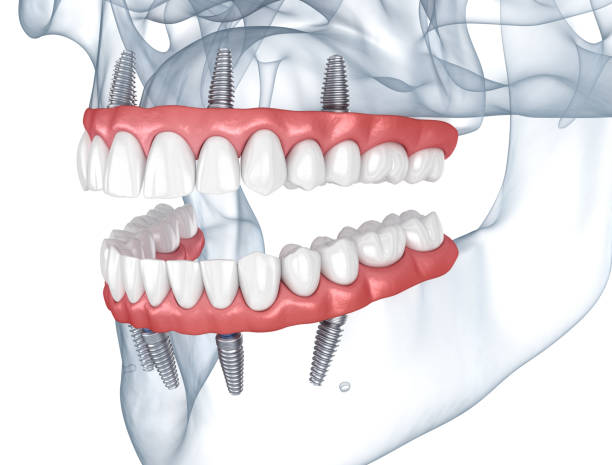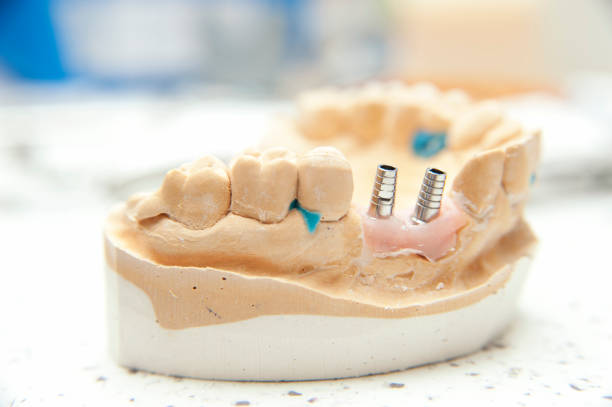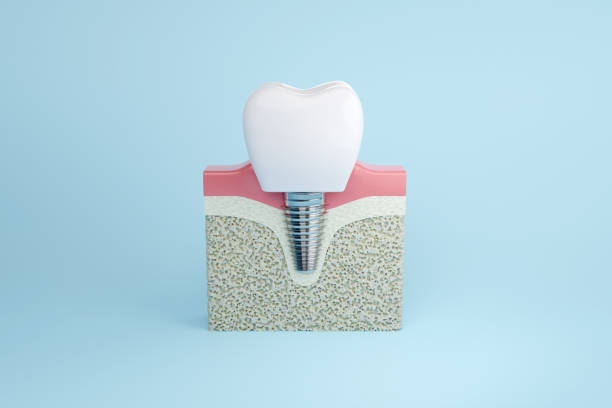
The appearance of dental implants is a matter of great concern for those considering this option for tooth replacement. But what do dental implants look like, and how do professionals ensure they blend seamlessly with natural teeth?
This guide explores the various aspects of dental implants, from their basic components to the technology used in creating the perfect aesthetic.
The Components of Dental Implants

Understanding dental implants begins with a look at their three main parts:
Implant Fixture
The implant fixture serves as the root of the implant. Typically made from titanium, it is surgically placed into the jawbone, providing a stable foundation.
The bone grows around the fixture, securing it in place. Though this part isn't visible once the implant is complete, its quality and position are essential for the overall success of the implant.
Abutment
The abutment is more than just a connector; it’s a crucial bridge between the implant fixture and the prosthetic crown. It's customized to support the desired appearance of the final implant, taking into account the individual's unique dental characteristics.
The precise design of the abutment ensures that the crown sits perfectly on the fixture.
Prosthetic Crown
Resembling the actual tooth, the crown comes in various materials, mimicking the color and shape of natural teeth. It is the part of the implant that people see, and its design requires meticulous attention to detail.
Whether choosing ceramic or metal alloys, the crown must look good and be functional.
Implant Materials and Their Aesthetic Appeal

Ceramic Implants
Ceramic implants have become a popular choice for their natural appearance and strength. Made from a specialized type of ceramic, they offer an option that closely resembles the translucency of natural teeth. Being biocompatible and robust, ceramic implants provide a long-lasting solution.
Zirconia Implants
Zirconia implants, a subset of ceramic implants, are especially appealing for those with metal sensitivities. They are white, allowing for a more natural look, and are known for their durability. The absence of metal also reduces the risk of corrosion, maintaining its aesthetic appeal over time.
Mimicking Natural Teeth: Shape and Size
Color Matching and Shade Selection
Choosing the correct shade is an art. Dentists and technicians carefully consider the color of adjacent teeth using specialized shade guides.
The goal is to create an implant that blends in seamlessly without drawing attention to itself. After all, the best compliment for a dental implant is when no one notices it at all.
Texture and Surface Finish
Texture plays a vital role in mimicking natural teeth. The surface of the implant must have a texture that reflects light, similar to natural enamel.
Too smooth, and it might look artificial; too rough, and it may attract bacteria. Finding the right balance is essential for both aesthetics and oral health.
Implant Placement and Angulation
Correct positioning of the implant is crucial for a natural look. Dentists use various tools to determine the optimal angle and placement, ensuring that the implant complements the overall smile.
An incorrectly placed implant could interfere with biting and chewing, not to mention its appearance.
Gum Tissue Integration
The implant must blend seamlessly with the gums for a natural look. Achieving this involves careful planning and execution. From selecting the right materials to the precise surgical techniques, gum tissue integration is vital.
Successful integration means that the implant doesn't just replace a tooth; it becomes part of your smile.
Handling Spacing and Alignment
Spacing and alignment are not merely about aesthetics; they also influence the functionality of the implant. Correct spacing avoids crowding or gaps, ensuring that the implant fits harmoniously with neighboring teeth.
Alignment, too, must be perfect, as misalignment can lead to bite problems and even speech issues.
Longevity and Aesthetic Sustainability
Dental implants aren't just about looking good today; they're about maintaining that appearance over time. From the materials used to the design and placement, every aspect of the implant contributes to its longevity.
Regular check-ups and proper oral hygiene further ensure that the implant continues to function and look great for many years.
Patient Consultation and Customization
Every mouth is different, and dental implants need to be tailored to individual needs. Consultations allow dental professionals to assess various factors like bone density, gum health, and existing tooth structure to provide the best aesthetic outcome.
Customization goes beyond the look; it's about creating an implant that feels right.
Before-and-After Cases: Visualizing Dental Implant Results
Before-and-after images provide insight into how dental implants can enhance an individual's appearance. They allow patients to see real results, easing concerns and setting realistic expectations.
These cases are invaluable for both patients and dental professionals to ensure satisfaction with the final result.
Maintaining Implant Aesthetics: Oral Care and Hygiene
Maintaining the appearance of dental implants is an ongoing task. Regular cleaning using appropriate techniques is essential to prevent staining and other issues that might mar the implant's appearance.
Moreover, professional cleanings and regular checkups help in the early detection of any potential problems.
The Role of Technology in Enhancing Implant Aesthetics
From 3D imaging to computer-guided surgery, modern technology plays a significant role in enhancing the aesthetic outcomes of dental implants. These advancements allow for more precise planning, design, and placement, contributing to a more natural look.
Dental Implants and Cavities: An Overview

Dental implants are not prone to cavities, but the surrounding teeth and gums still need proper care. The potential for cavities in the remaining natural teeth underscores the importance of regular dental hygiene.
Remember, cavities near an implant can affect the overall health of the mouth and the success of the implant.
Periodontal Scaling: Keeping the Gums Healthy
Periodontal scaling is essential for maintaining healthy gums around dental implants. By removing plaque and tartar, scaling prevents inflammation that might threaten the implant.
Regular professional cleaning, including scaling, helps keep the gums healthy, ensuring the implant continues to look natural and functions well.
Veneers vs. Dental Implants: A Comparison
While dental implants replace missing teeth, veneers are often used to enhance the appearance of existing teeth. Unlike implants, veneers are thin shells placed over the front surface of a tooth.
They might be a suitable option for someone looking to improve their aesthetics without needing a tooth replacement. The choice between veneers and implants depends on the individual's needs and the condition of their teeth.
Dental Implants at Mountain View Dental
Mountain View Dental specializes in dental implants, employing state-of-the-art technology and methods. The team at Mountain View is committed to ensuring satisfying results by offering a range of options to suit different aesthetic needs and preferences.
Schedule an appointment with us!
Conclusion

"What Do Dental Implants Look Like?" is a multifaceted question, touching on the science, art, and technology that create natural-looking dental implants.
From the materials used to meticulous planning and customization, dental implants can provide a natural, functional, and lasting solution for those missing one or more teeth.
